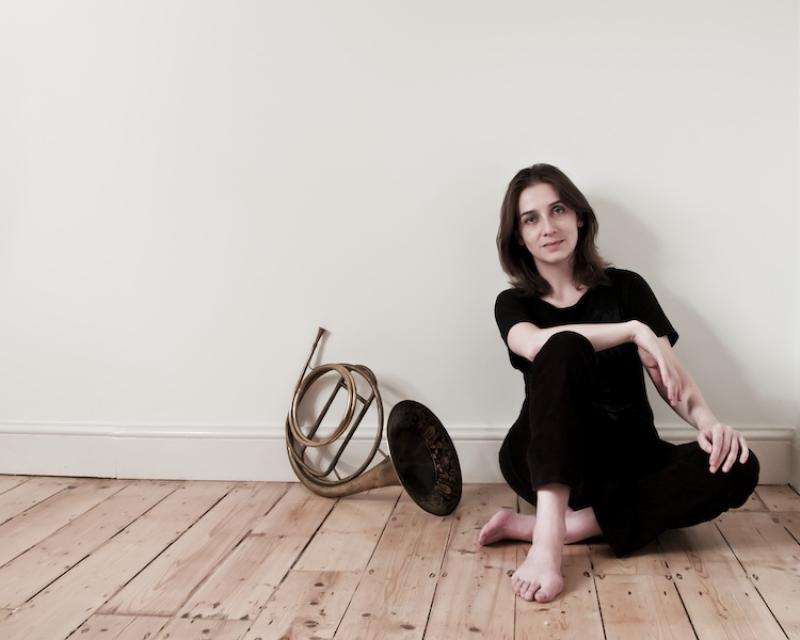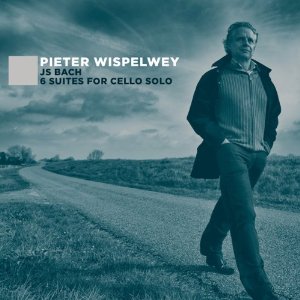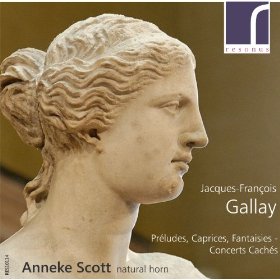Classical CDs Weekly: Bach, Dvořák, Gallay | reviews, news & interviews
Classical CDs Weekly: Bach, Dvořák, Gallay
Classical CDs Weekly: Bach, Dvořák, Gallay
Solo works for cello and horn alongside two delectable symphonies


Bach’ s Cello Suites remained stubbornly off-limits to me until I read Eric Siblin’s affectionate, rambling book, The Cello Suites: In Search of a Baroque Masterpiece. I’m now a convert; after overdosing on thick orchestral sludge we all need a palate cleanser, and these six solo suites do the job beautifully. Like many, I got to know these works through Pierre Fournier’s elegant 1960s cycle. You soon find yourself acquiring, imperceptibly, other sets. You won't get bored of hearing this music. Dutch cellist Peter Wispelwey’s third recording was made to celebrate his 50th birthday, and it offers a glorious contrast. The playing is exquisite, and the combination of a warm, close-up recording and Wispelwey’s’s decision to tune his baroque cello to a lower pitch (A=392) gives the suites an appealing, earthy gruffness.The point is made forcefully in the accompanying DVD, where the charismatic, enthusiastic Wispelwey shows us how differently the same passages can sound when pitched differently.
This is the best "making-of" DVD I’ve seen – scholarly, entertaining and visually appealing. It also makes one wish that the Oxford live performances which accompanied these CDs could be issued in some form. Wispelwey’s approach makes for compelling listening. In his words, with looser, thicker strings, “their speech is even more characterful… having removed myself from the comfort and smoothness of the modern cello gave the sensation of entering rooms that I hadn’t been in before.” There’s a daring expressiveness on display, along with several tempo choices which might alarm traditionalists. They should watch the DVD first, and all will make sense. Sound and production are excellent. The record label, charmingly if inexplicably, is called Evil Penguin.
Watch Peter Wispelwey play Bach:

José Serebrier’s Dvořák cycle hasn’t disappointed so far. These two symphonies are seldom heard in concert, and the competition on CD is consequently less fierce. Their prevailing sunniness can seem disquieting – most of the weighty late-romantic symphonies are grand statements in minor keys. Dvořák’s Sixth is a large-scale work in unruffled D major. It begins in beguiling fashion, with rising fourths in low strings launching music which swings with unforced elegance. Serebrier keeps the triple time rhythms buoyant and alert, never letting the textures muddy. This is seriously lovely stuff – a radiant Adagio is followed by a Scherzo which couldn’t come from the pen of any other composer, and a Finale which wraps things up in brassy style. The orchestral playing is beyond reproach – limpid wind solos and plenty of warmth in the lower string sound.
Dvořák’s 3rd is rarer still, a three-movement work in E flat, starting with another triple time movement. Its catchiest thematic idea is disarmingly bare, a simple descending scalic figure manipulated, rescored, reharmonised in all manner of ways, recalling Brahms. The middle movement’s loud climax, all brass chorales and swirling harp, suggests Das Rheingold, while always sounding like Dvořák. We all enjoy discovering music we’ve not heard by composers we’re fond of, and there’s so much more to Dvořák than the New World Symphony and the Cello Concerto, good though they are. This is very, very impressive.

Jacques-Françoise Gallay was born in Perpignan in 1795. Precociously gifted as a horn player, he got his first professional job as a teenager and eventually enrolled at the Paris Conservatoire aged 24 to study both horn and composition. His reputation soon spread; Rossini wrote music for him and Berlioz was a fan. Valved horns were starting to appear in Germany, but Gallay remained loyal to the hand horn, later composing scores of solo works for the instrument. The instrument’s pitch is determined by the length of the crook inserted; Gallay never specified which keys he required, leaving it to the discretion of the performer.
Playing these pieces on a modern instrument is difficult enough. Hearing them performed with this much panache on an unvalved horn built in 1823 is astonishing. Anneke Scott’s playing is bold and dramatic, Gallay’s theatrical background reflected in the music’s swagger. These short pieces are essentially technical studies, but they’re consistently entertaining. Wisely, Scott doesn’t attempt to minimise the difference between the horn’s pinched, nasal stopped notes and the breezy natural harmonics, making the instrument sound much more natural, much more human. The faster moments are incendiary – I’m addicted to the flamboyant opening flourish of the fourth of Gallay’s Douze Grands Caprices. Scott has sequenced these short works neatly, and several of the slower, more reflective Préludes provide relief from the pyrotechnics. It’s wonderful – and appears on the Resonus label, which means that it’s a download only. But it’s reasonably priced, brilliantly recorded and comes with an excellent sleeve note.
Explore topics
Share this article
The future of Arts Journalism
You can stop theartsdesk.com closing!
We urgently need financing to survive. Our fundraising drive has thus far raised £49,000 but we need to reach £100,000 or we will be forced to close. Please contribute here: https://gofund.me/c3f6033d
And if you can forward this information to anyone who might assist, we’d be grateful.

Subscribe to theartsdesk.com
Thank you for continuing to read our work on theartsdesk.com. For unlimited access to every article in its entirety, including our archive of more than 15,000 pieces, we're asking for £5 per month or £40 per year. We feel it's a very good deal, and hope you do too.
To take a subscription now simply click here.
And if you're looking for that extra gift for a friend or family member, why not treat them to a theartsdesk.com gift subscription?
more Classical music
 Kempf, Brno Philharmonic, Davies, Bridgewater Hall, Manchester review - European tradition meets American jazz
Bouncing Czechs enjoy their Gershwin and Brubeck alongside Janáček and Dvořák
Kempf, Brno Philharmonic, Davies, Bridgewater Hall, Manchester review - European tradition meets American jazz
Bouncing Czechs enjoy their Gershwin and Brubeck alongside Janáček and Dvořák
 Solomon, OAE, Butt, QEH review - daft Biblical whitewashing with great choruses
Even a top soprano and mezzo can’t make this Handel paean wholly convincing
Solomon, OAE, Butt, QEH review - daft Biblical whitewashing with great choruses
Even a top soprano and mezzo can’t make this Handel paean wholly convincing
 Two-Piano Gala, Kings Place review - shining constellations
London Piano Festival curators and illustrious friends entertain and enlighten
Two-Piano Gala, Kings Place review - shining constellations
London Piano Festival curators and illustrious friends entertain and enlighten
 Echo Vocal Ensemble, Latto, Union Chapel review - eclectic choral programme garlanded with dance
Beautiful singing at the heart of an imaginative and stylistically varied concert
Echo Vocal Ensemble, Latto, Union Chapel review - eclectic choral programme garlanded with dance
Beautiful singing at the heart of an imaginative and stylistically varied concert
 Scott, Irish Baroque Orchestra, Whelan, RIAM, Dublin review - towards a Mozart masterpiece
Characteristic joy and enlightenment from this team, but a valveless horn brings problems
Scott, Irish Baroque Orchestra, Whelan, RIAM, Dublin review - towards a Mozart masterpiece
Characteristic joy and enlightenment from this team, but a valveless horn brings problems
 Classical CDs: Voice flutes, flugelhorns and froth
Baroque sonatas, English orchestral music and an emotionally-charged vocal recital
Classical CDs: Voice flutes, flugelhorns and froth
Baroque sonatas, English orchestral music and an emotionally-charged vocal recital
 Kanneh-Mason, Britten Sinfonia, Shave, Milton Court - a grin and a big beaming smile
A pair of striking contemporary pieces alongside two old favourites
Kanneh-Mason, Britten Sinfonia, Shave, Milton Court - a grin and a big beaming smile
A pair of striking contemporary pieces alongside two old favourites
 theartsdesk at the New Ross Piano Festival - Finghin Collins’ musical rainbow
From revelatory Bach played with astounding maturity by a 22 year old to four-hand jazz
theartsdesk at the New Ross Piano Festival - Finghin Collins’ musical rainbow
From revelatory Bach played with astounding maturity by a 22 year old to four-hand jazz
 First Person: Manchester Camerata's Head of Artistic Planning Clara Marshall Cawley on questioning the status quo
Five days of free events with all sorts of audiences around Manchester starts tomorrow
First Person: Manchester Camerata's Head of Artistic Planning Clara Marshall Cawley on questioning the status quo
Five days of free events with all sorts of audiences around Manchester starts tomorrow
 Goldscheider, Brother Tree Sound, Kings Place review - music of hope from a young composer
Unusual combination of horn, strings and electronics makes for some intriguing listening
Goldscheider, Brother Tree Sound, Kings Place review - music of hope from a young composer
Unusual combination of horn, strings and electronics makes for some intriguing listening

Add comment